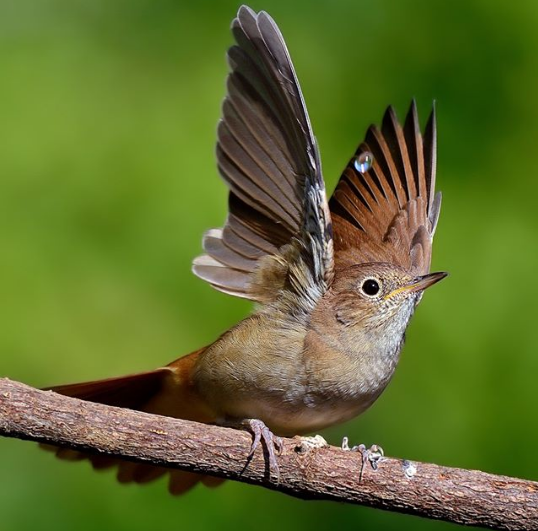
Poetry Project #1: “Ode to a Nightingale” by John Keats
John Keats’ “Ode to a Nightingale” is a
classic Romantic poetry that represents the romantic era and its charm in many
ways. Romantics, as we’ve learned, valued nature, emotions, and imagination in
response to a changing world. What people felt became important in the face of
revolution, and poets used these movements as momentum to create art that spoke
to average people about their very average and heightened emotions.
The emotional depth of
Keats’ poetry is the most outstanding Romantic factor at play. This is a common
factor in many of his poems from this anthology, but in “Ode to a Nightingale”,
Keats begins his first stanza relaying his emotional distress. “MY heart aches,
and a drowsy numbness pains / My sense, as though of hemlock I had drunk” (1-2).
Keats’ poetry often focuses on the dark emotions like sadness and depression.
However, in this same stanza, Keats contrasts these emotions to the light-hearted
song of the nightingale: “’Tis not through envy of thy happy lot, / But being
too happy in thine happiness, / That thou, light-winged dryad of the trees, /
In some melodious plot / Of beechen green, and shadows numberless, / Singest of
summer in full-throated ease” (5-10). This contrast places the reader in a
position to analyze the emotions in relation to one another, perhaps if it were
not for the speaker’s own distress he could not have acknowledged or
appreciated the song of the nightingale in such a profound manner. The
nightingale’s song provokes him to ponder the contrast of these emotions, and
the nightingales’ place in the world in comparison to his.
Keats’ connection with
nature for the sake of his emotional well-being is clear in “Ode to a
Nightingale”. The emotional piece of Romanticism ties in closely to the part of
Romanticism that valued nature – and nature’s direct connection to God and
spirituality. I think in Keats’ case that the connection to nature is more emotional
than spiritual, as God is not directly mentioned in the poem, though he muses
on Death. “Darkling I listen; and, for many a time / I have been half in love
with easeful Death, / Call’d him soft names in many a mused rhyme, / To take
into the air my quiet breath; Now more than ever seems it rich to die” (51-5).
The nightingale’s song is allowing him to contemplate the deep feelings he has
surrounding death and his own melancholy, in the next stanza he discusses the
immortality of the bird, whose natural presence is profound to him in the sense
that it allows him to ponder his mortality in comparison to nature’s
everlasting presence.
The use of imagination
and the supernatural is present in Keats’ “Ode to a Nightingale”, as he dreams
of the Nightingale and its song as a sort of “immortal”, “charmed” and “magic”
presence. While I feel that Keats really focuses on emotion and nature more
than other Romantic pillars, the use of imagination comes through as Keats describes
the bird as magic and immortal because it is reasonable to assume that he knew
this was not the case. Instead, the nightingale’s song is immortal, as it is
ever present in nature as nightingales die and new ones grow up. The magic
comes from the feelings he experiences while listening to the song, which he
compares to “a draught of vintage”, “tasting of Flora”, and “blushful
Hippocrene”. Keats, or the speaker here in “Ode to a Nightingale”, is
mesmerized by the song in a way that allows him to believe it is of
supernatural presence. His imagination runs wild as he is blissfully engaged
with the song, inspired to compare himself to the bird in every way he knows
how.
Works Cited
Keats, John. “Ode
to a Nightingale.” The Norton Anthology of English Literature: The Romantic
Period, edited by Stephen Greenblatt and Deidre Shauna Lynch, Norton, 2018,
pp. 977-9.